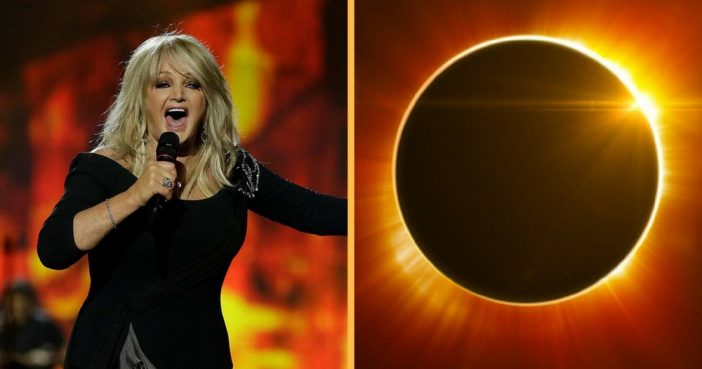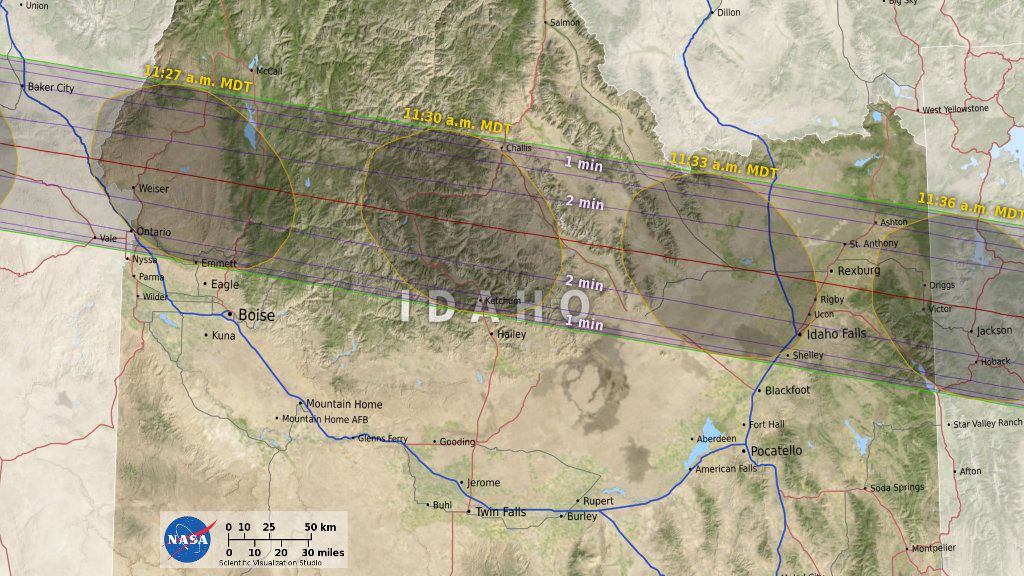
The length of the eclipse depends on your location: if you’re in the path of totality, the Moon should take about an hour and a half to cut across the Sun before completely covering up the solar disc for a few minutes; it will then take another hour and a half to exit the disc. (Vox’s map can also help you figure out how long the eclipse will last in your area.)
The length of totality — when the Sun is completely covered — also depends on where you are on the path. Here’s a closer look at the eclipse’s path over Idaho, for instance:

The red line running through the middle of the eclipse path is known as the centerline. The closer you are to the centerline, the longer totality will last. NASA estimates that totality will max out in southern Illinois, lasting more than two minutes and 40 seconds.
WHAT CAN I EXPECT TO HAPPEN DURING THE ECLIPSE?
Short answer: a black orb slowly creeping across the Sun. Long answer: a lot of unique phenomena — at least for those in the path of totality. As the Moon begins to conceal the Sun, the sunlight will brighten on one side of the Lunar’s edge, creating the so-called diamond ring effect. That’s because it looks like a bright diamond attached to a ring of light, which is the Sun’s atmosphere shining around the Moon.
Because the Moon isn’t exactly smooth, you can also witness an effect known as Baily’s Beads. Just before totality, specks of sunlight will pop out between the various valleys and indentions in the lunar crust, creating beads of light that sparkle around the edge of the Moon.
/cdn.vox-cdn.com/uploads/chorus_asset/file/9004655/89160489.jpg)
Meanwhile, things may get interesting on the ground: birds, for instance, will stop chirping during totality, since they’ll think it’s nighttime. And people may feel a slight drop in temperature, since our main heat source is covered up. NASA has a few tips for how to measure this temperature drop, if you’re interested.
WHAT DO I NEED TO WATCH THE ECLIPSE?
Staring at the Sun is bad for your eyes. So in order to view the Moon’s encroachment on the Sun, you’ll need to pick up a pair of solar filter sunglasses, which block more than 99.99 percent of sunlight, as well as ultraviolet and infrared radiation. These glasses make the Sun appear as a muted orange or white disc in the sky. NASA and the American Astronomical Society have a list of manufacturers who make safe, standardized glasses for viewing the Sun. Be wary before purchasing your glasses on Amazon — not all manufacturers are selling products that are up to code.
/cdn.vox-cdn.com/uploads/chorus_asset/file/9004667/467000916.jpg)
More Info NEXT…
